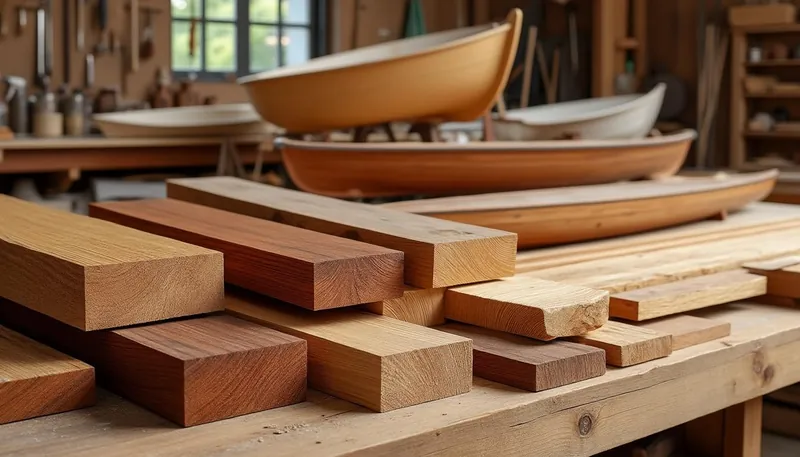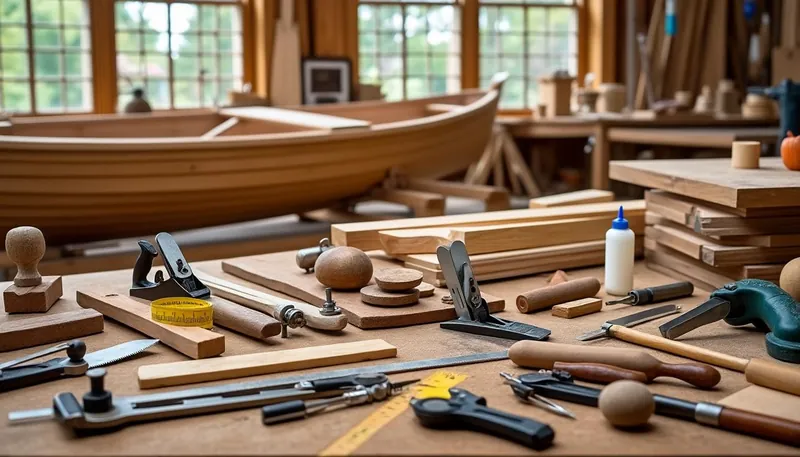When it comes to crafts and structures that flirt with water, such as wooden boats, epoxy resin stands out as a vital ingredient. Why? Because it’s not just a fancy coating—it’s a specialized substance that enhances not only the appearance of wooden boats but also their functionality. This hard synthetic resin, which undergoes a fascinating transformation from a liquid to a solid state when mixed with a hardener, is lauded for its exceptional bonding capacity and durability. In this article, we’re diving into the world of epoxy resin, exploring its unique properties, applications, and benefits specifically in wooden boat construction. Get ready to see just how epoxy resin is an absolute game-changer in this arena!
Brief:
- Epoxy resin forms a strong bond, crucial for boat durability.
- Seals wooden surfaces to protect against moisture and environmental damage.
- Enhances aesthetic appeal, highlighting wood’s natural beauty.
- Varied types of epoxy tailored for specific crafting and marine applications.
- Critical preparation and application techniques ensure optimal results.
Understanding Epoxy Resin and Its Composition
To appreciate how epoxy resin finds its place in the realm of wooden boats, it helps to understand what it is at its core. Epoxy resin is a synthetic polymer formed by two components: resin and hardener. When combined, these components initiate a chemical reaction, resulting in a hardened plastic-like material. This transformation is essential because the characteristics that emerge are what makes epoxy so appealing to woodworkers and boat builders alike.
Key Properties of Epoxy Resin:
- Adhesive Strength: Epoxy resin is known for forming a super-strong bond, making it perfect for joining wood pieces. Its strength surpasses many traditional adhesives, which is vital for structural integrity in boats.
- Water Resistance: One of the standout features of epoxy is its ability to repel water. Once cured, it secures wooden surfaces against moisture, crucial for any vessel that interacts with water.
- Durability: It withstands UV radiation, chemicals, and extreme temperatures, ensuring the craft can brave harsh environments, whether it’s saltwater or freshwater.
- Versatility: Mix and match with colorants or additives to achieve a desired finish, making it suitable for artistic applications too.

Creating Strong Bonds: How Epoxy Works with Wood
One of the remarkable features of epoxy resin is its compatibility with wood, which leads us to consider the various applications it has in woodworking, particularly in the construction and upkeep of wooden boats. The interaction between epoxy and wood not only enhances the mechanical properties but also supports aesthetic advances.
Application in Wooden Boat Building
Here’s how epoxy is commonly used in wooden boat construction:
- Bonding Joints: Epoxy enhances the structural soundness of wooden joints, preventing them from loosening over time.
- Sealing Surfaces: It acts as a sealant to protect against the elements, ensuring that moisture does not seep into the wood. This is vital since excess moisture can lead to rot and decay.
- Filling Gaps: For custom boat builders, epoxy serves as a filler for voids and cracks, creating a smooth surface ideal for painting and finishing.
Preparing Your Wood for Epoxy Application
Proper preparation is vital when working with epoxy. To achieve a solid bond, wooden surfaces need to be clean, dry, and adequately roughened. Here’s a quick checklist:
- Cleaning: Remove all dirt, dust, and grease from the surface.
- Sanding: Sand the area to create better adhesion with the epoxy.
- Moisture Check: Ensure the wood is dry, ideally with a moisture content below 15%.
Types of Epoxy Suitable for Wooden Boats
In the world of boat-building, not all epoxies are created equal. Understanding the different types of epoxy available can aid in selecting the right product for your project. The three primary types include:
| Type of Epoxy | Best Use | Set Time | Features |
|---|---|---|---|
| Standard Epoxy | General bonding and repairs | 30-60 minutes | Strong bond, versatile for various applications 🌟 |
| Clear Epoxy | Finishing and coating | 1-3 hours | Transparent finish, enhances wood grain 🌟 |
| Marine Epoxy | Water-exposed projects | 2-4 hours | Excellent water resistance, ideal for boats 🚤 |

Limitations and Considerations When Using Epoxy
While epoxy brings plenty of benefits, it’s also important to understand its limitations within wooden boat applications. Being aware of these can help ensure you’re making informed decisions during your build.
- Weight: Epoxy adds weight, which may affect performance.
- Curing Time: Longer curing times can delay projects; always plan accordingly.
- Compatibility: Not all wood types bond equally well with epoxy, especially those that are oily.
- Cost: Good quality epoxy can be more expensive than other adhesives.
Tips and Techniques for Working with Epoxy in Boat Construction
Working with epoxy can initially be intimidating, but with practice and the right techniques, it becomes easier. Here are some key tips to keep in mind:
Application Process
The application requires precision and care:
- Mixing: Follow manufacturer guidelines for the right ratios to ensure proper curing.
- Temperature Matters: Working in a controlled environment enhances curing.
- Use Proper Tools: Brushes, rollers, and spreaders can help achieve an even application.
- Layering: Apply in layers to build thickness and improve appearance.
Maintenance of Epoxy-Coated Wooden Boats
To keep your boat looking and functioning great, regular maintenance is essential:
- Cleaning: Use mild soapy water and a soft cloth—avoid abrasives.
- Inspection: Regularly inspect for wear or damage, especially in high-traffic areas.
- Reapplication: Fading or wear may call for a routine reapplication of epoxy.
What is epoxy resin primarily used for?
Epoxy resin is widely used for bonding and sealing wooden surfaces, especially in boat building, to enhance durability and protect against moisture.
Can any type of wood be used with epoxy?
While epoxy works well with many wood types, oily or treated woods may not bond effectively.
How can I ensure the best bond when using epoxy on wood?
Preparation is key: clean, sand, and dry the wood thoroughly before applying epoxy to enhance adhesion.
What is the difference between marine epoxy and standard epoxy?
Marine epoxy is specifically formulated to withstand harsh water conditions, providing superior water resistance compared to standard epoxy.
Are there any safety concerns when using epoxy?
While epoxy is safe once cured, always ensure proper ventilation during application to minimize exposure to fumes.


